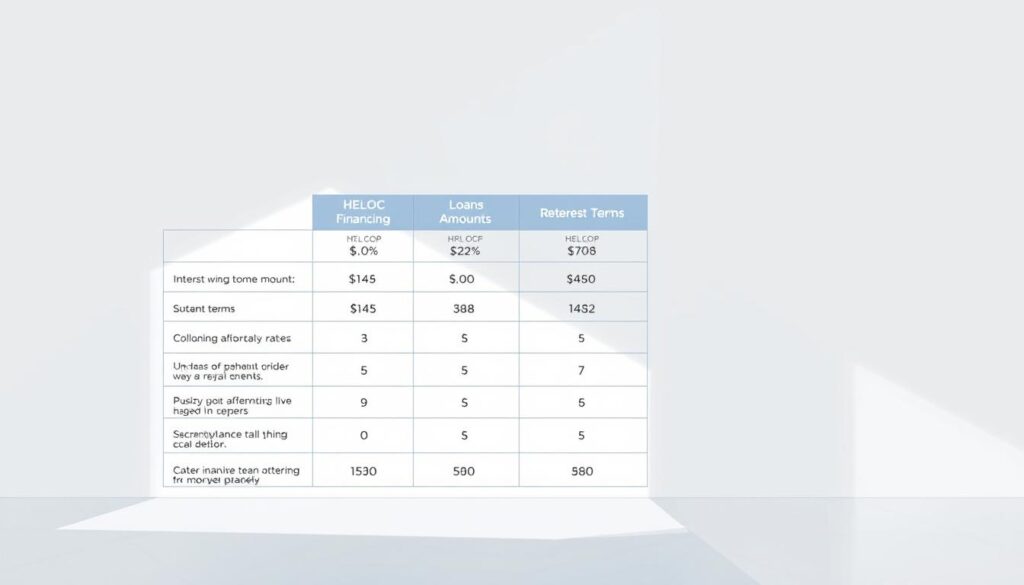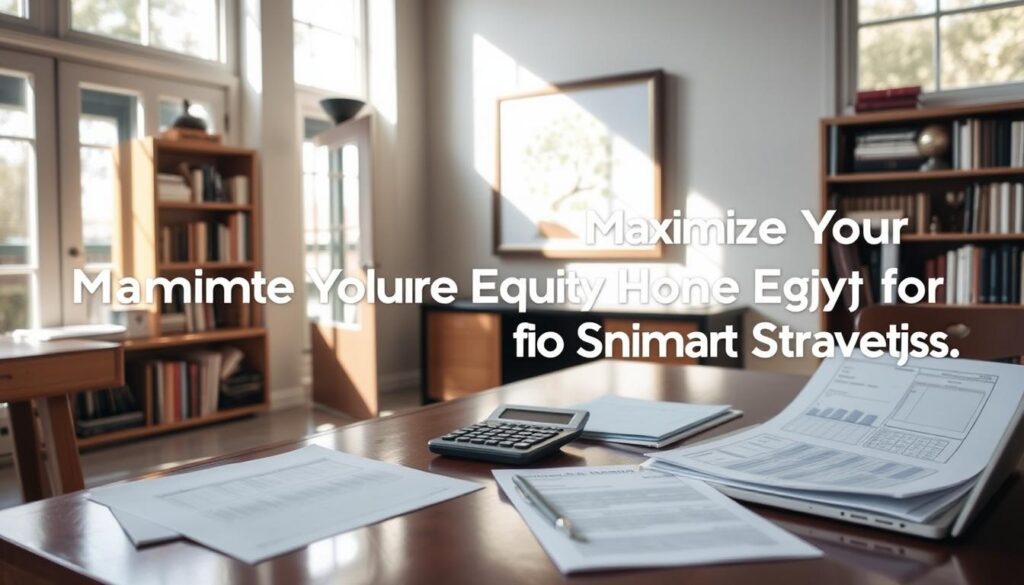Did you know that U.S. homeowners collectively hold over $10 trillion in untapped home equity? With home values rising by 12% nationally in the past year alone, your property’s growing equity could be a hidden asset ready to fuel smarter investments. Home equity—the difference between your home’s value and any outstanding mortgage—has become a financial tool many overlook. CBS News reports that 68% of American homeowners don’t realize how this equity can expand their investment options beyond traditional stocks or bonds. Imagine redirecting that built-up value to diversify your portfolio, whether funding a rental property, starting a business, or backing alternative assets. This article reveals how tapping into your home equity could balance your financial strategy in today’s volatile markets.
Your home isn’t just a place to live—it’s a financial resource waiting to be leveraged. As real estate investment trends show, strategic use of home equity can turn a fixed asset into dynamic capital. Let’s explore how to unlock this potential without sacrificing long-term stability.
Understanding Home Equity and Its Investment Potential
Your home isn’t just a place to live—it’s a financial asset. Home equity represents the portion of your property’s value you truly own. This number grows as you pay down your mortgage or when home prices rise. Let’s explore how this equity becomes a tool for investment diversification.
What is Home Equity?
Home equity is calculated by subtracting your remaining mortgage balance from your home’s current market value. For example:
| Home Value | Outstanding Mortgage | Your Equity |
|---|---|---|
| $300,000 | $150,000 | $150,000 |
Every dollar paid toward your mortgage builds equity, turning your home into a source of accessible funds.
How Home Equity Translates to Investment Power
Equity becomes investment capital through loans or lines of credit. Here’s how it works:
- Borrow against equity via a home equity loan or HELOC.
- Use funds to invest in rental properties, stocks, or business ventures.
- Maximize investment diversification by spreading capital across multiple assets.
Rising home values boost equity faster, creating opportunities to reinvest in varied markets. Think of it as unlocking hidden cash to grow wealth beyond real estate alone.
Evaluating Your Home Equity for Diversification
Knowing your home’s value is the first step toward using it to strengthen your diversified portfolio. Start by calculating your equity—the difference between your home’s current value and remaining mortgage balance. This number shows how much potential capital you hold.
- Request a professional appraisal to confirm your home’s market value.
- Subtract your outstanding mortgage balance from the appraised value to find your equity.
- Compare your equity percentage (equity divided by appraised value) to national averages.
| Step | Method | Purpose |
|---|---|---|
| Appraisal | Professional evaluation | Pinpoints current market value |
| Mortgage Check | Review loan statements | Shows remaining debt to subtract |
| Equity Calculation | Math formula: (Appraised Value – Loan Balance) | Reveals usable funds for investments |
Recent data shows homeowners with over 20% equity can access funds safely. Use this insight to decide how much to allocate toward stocks, real estate, or other assets. A clear equity snapshot helps avoid overextending while building a balanced diversified portfolio. Regularly updating these calculations as property values and loans change.
The Role of Home Equity Investment in a Diversified Portfolio
Home equity investment isn’t just about tapping into your home’s value—it’s a strategic move to grow your financial future. Let’s explore how this approach fits into your broader wealth-building plan.
Defining the Concept
Home equity investment involves using your property’s equity to fuel other opportunities. This could mean borrowing against your home to buy rental properties, invest in stocks, or start a business. Unlike traditional loans, it leverages an asset you already own, reducing dependency on external funding. Financial experts like CBS News highlight this trend as homeowners increasingly see their homes as flexible investment tools.
Why It Matters in Your Strategy
Incorporating this into your portfolio offers two key benefits:
- Reduced risk: Spreading funds across real estate, stocks, and other assets lowers dependency on any single investment.
- Access to low-cost capital: Home equity loans often come with lower interest rates than personal loans, making ventures more affordable.
Imagine using home equity to diversify into rental properties while keeping your primary residence as collateral. This strategy balances risk and growth potential. By integrating home equity investment thoughtfully, you turn a static asset into a dynamic part of your financial roadmap.
Assessing Risk and Return in Home Equity Investments
Before diving into home equity investments, investment risk and potential gains must align with your financial goals. Current market trends show real estate values fluctuate, so understanding how these shifts impact your equity is key.
Understanding the Risk Profile
Risk factors vary depending on how you tap into equity. For example, using a HELOC from banks like Bank of America or Chase exposes you to variable interest rates. Overleveraging—borrowing more than 80% of your home’s value—raises default risks if property values drop. Always ask:
- Can I afford fluctuating payment rates?
- Does my budget handle market downturns?
Projecting Investment Returns
Calculate returns through scenarios. Suppose you take a $50,000 HELOC at 5% interest to renovate a kitchen. If resale adds $75,000 to your home’s value, your net gain could be $20,000. Compare loan options using this table:
| Loan Type | Pros | Cons |
|---|---|---|
| HELOC | Flexible access, tax-deductible interest | Variable rates, home as collateral |
| Cash-Out Refinance | Fixed rates, lump sum access | Long-term commitment, closing costs |
Always pair market analysis with personal cash flow. Balancing these factors helps turn home equity into a smart, low-investment risk opportunity.
Integrating Home Equity into Your Overall Portfolio
Smart real estate financing strategies let you merge home equity with other investments without overcomplicating your financial plan. Start by mapping your current portfolio—stocks, bonds, retirement accounts—to see where home equity can fill gaps. For instance, a HELOC (Home Equity Line of Credit) can fund side projects while keeping high-growth assets intact.
- Assess liquidity: Compare cash reserves vs. equity access for emergencies
- Match timelines: Align investment horizons—use equity for long-term goals like rental properties
- Balance risk: Pair equity-based moves with low-risk bonds to offset market volatility
Real estate financing tools like cash-out refinances or equity loans create flexibility, but always keep 20-30% equity buffered for stability. Look at how investors in markets like Austin or Seattle use equity to scale rental holdings while maintaining stock allocations. This creates a dynamic portfolio that leverages both property appreciation and traditional investments.
Navigating Financing Options and Loan Products
When tapping into your home equity, understanding loan choices helps align your goals with the right product. Let’s break down the main options available to you:

Types of Home Equity Loans
Lenders offer three primary ways to access your home’s value:
- HELOC (Home Equity Line of Credit): A revolving credit line you can draw from over time.
- Home Equity Installment Loan: Fixed payments over a set term.
- Cash-out Refinance: Replacing your existing mortgage to receive equity as cash.
Pros and Cons of Each Option
Compare features to match your needs:
HELOC Flexibility: Borrow as needed, but watch interest rates that may rise. Ideal for projects with fluctuating costs.
Installment Loans: Predictable payments but less adaptable for changing budgets.
Cash-Out Refinance: Lump-sum access but involves closing costs and resetting your repayment timeline.
Research terms carefully—low upfront costs might hide long-term risks. Always compare rates and fees before choosing.
Tax Implications and Financial Planning for Home Equity Use
When tapping into home equity, tax implications play a crucial role in maximizing returns. The IRS sets clear rules for what qualifies as deductible. For instance, interest on home equity debt is tax-deductible only if loans are used for home improvements. This means renovating a kitchen or adding a room could qualify, but investments in stocks or cars typically won’t.
- Key Deductions: Mortgage interest on up to $750,000 of home equity debt may be deducted, but rules vary by state.
- Improvement vs. Expenses: Repairs that increase home value (e.g., installing solar panels) may offer tax advantages over routine maintenance.
- Loan Purpose Matters: Using funds for investment properties? Consult a tax advisor—rules differ from primary home loans.
Proactive planning ensures you avoid unexpected tax surprises. Track every dollar spent on qualified expenses and keep records for at least three years. Review IRS Publication 530 annually for updates. Financial advisors recommend aligning home equity withdrawals with your long-term goals, like funding education or business ventures, to balance risk and reward.
Practical How-To Guide for Leveraging Home Equity
Maximizing your home equity starts with clear, actionable steps. Follow this guide to turn your home’s value into a strategic tool for portfolio diversification.
Step-by-Step Action Plan
- Calculate your equity: Use online calculators or consult a real estate appraiser to determine your current home value and loan balance.
- Consult a financial advisor: Discuss how home equity aligns with your portfolio diversification goals. Experts like Fidelity or Vanguard often offer free consultations.
- Select a financing option: Compare home equity loans, HELOCs, or cash-out refinance terms from lenders such as Chase or Bank of America.
- Reinvest proceeds wisely: Allocate funds into high-return assets like stocks, real estate, or education to enhance your investment mix.
Key Considerations Before Investing
- Credit score: Maintain a 700+ FICO score for better loan terms.
- Market trends: Track regional housing data via Zillow or Redfin to avoid overvaluing your property.
- Emergency funds: Keep 3-6 months of expenses liquid before using home equity.
Monitoring Your Investment
Regular check-ins ensure your strategy stays on track. Follow this schedule:
| Check Frequency | Action |
|---|---|
| Monthly | Review loan interest rates and payment schedules |
| Quarterly | Compare equity growth vs. market averages |
| Annually | Reassess portfolio diversification balance with a financial planner |
Small adjustments today can lead to significant long-term gains. Stay proactive to protect and grow your financial future.
Common Mistakes to Avoid When Investing in Home Equity
Maximizing home equity’s potential starts with avoiding costly errors. Two key pitfalls risk undermining even the best investment opportunities. Here’s how to steer clear of them.
Overleveraging Risks
Home equity loans average 7.29% interest, while HELOCs sit at 7.3%, according to TrueHold. Borrowing too much leaves little room if income drops. A garage conversion costing $100,000–$150,000 might boost property value by $158,000—but overborrowing traps you in debt if markets shift.
Ignoring Market Trends
Home improvements like manufactured stone veneer (91.4% return) or minor kitchen upgrades (71.2% ROI) shine when aligned with demand. Overlook local trends, though, and your investment opportunities could fizzle. A 2025 report from HEI Explained warns against assuming all projects automatically add value.
- Avoid borrowing more than 80% of your home’s equity
- Research neighborhood demand before projects
- Track stock market returns (7%-14% average) to balance risks
Protecting your equity requires vigilance. By avoiding these missteps, you free up resources to explore safer, higher-return investment opportunities. Stay informed and prioritize long-term stability over quick gains.
Conclusion
Your home’s equity isn’t just a number on a balance sheet—it’s a tool to strengthen your financial future. By following the steps outlined, you’ve learned how tapping into equity can diversify investments while aligning with your financial goals. Whether you choose a home equity loan, line of credit, or another option, integrating this asset into your strategy requires careful planning.
Risk management stays key. As discussed earlier, overextending credit or ignoring market shifts can undermine even the best-laid plans. Smart financial planning means balancing potential returns with caution. Reviewing loan terms, tax impacts, and your portfolio’s overall health ensures every decision supports long-term stability.
Start by revisiting your current equity value and matching it to your investment priorities. Work with lenders offering transparent terms, like those highlighted in major banking guides. Regular check-ins with a financial advisor help adjust strategies as markets change. Remember, leveraging home equity wisely isn’t a one-time move—it’s part of an ongoing process to build resilience and growth.
Take the next step today by evaluating your options through reputable providers. Your home’s value is more than shelter—it’s a foundation for smarter financial moves when approached thoughtfully. Let your equity work for you while staying mindful of every detail in your broader financial roadmap.



